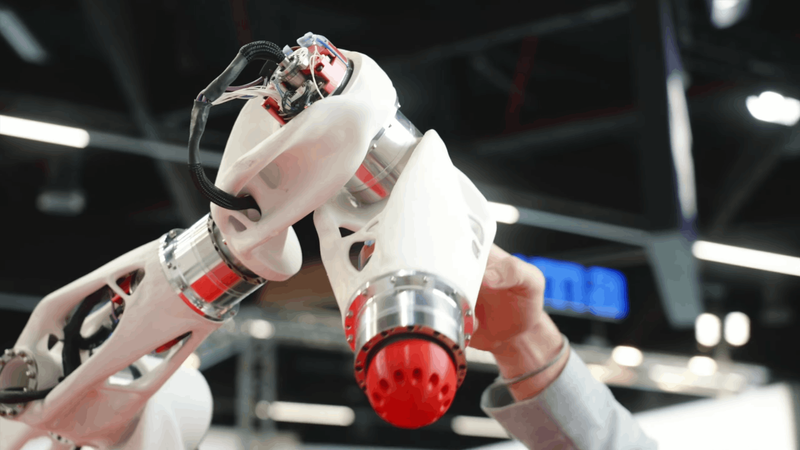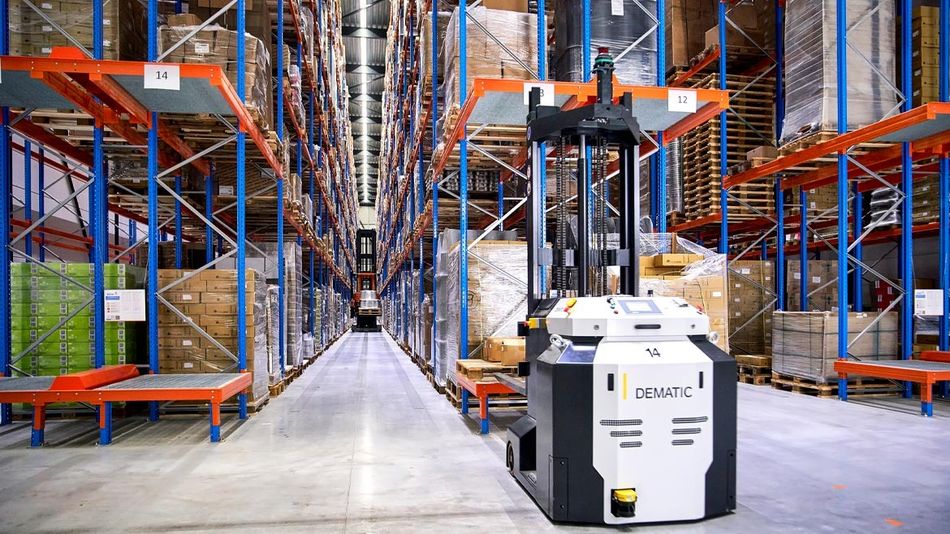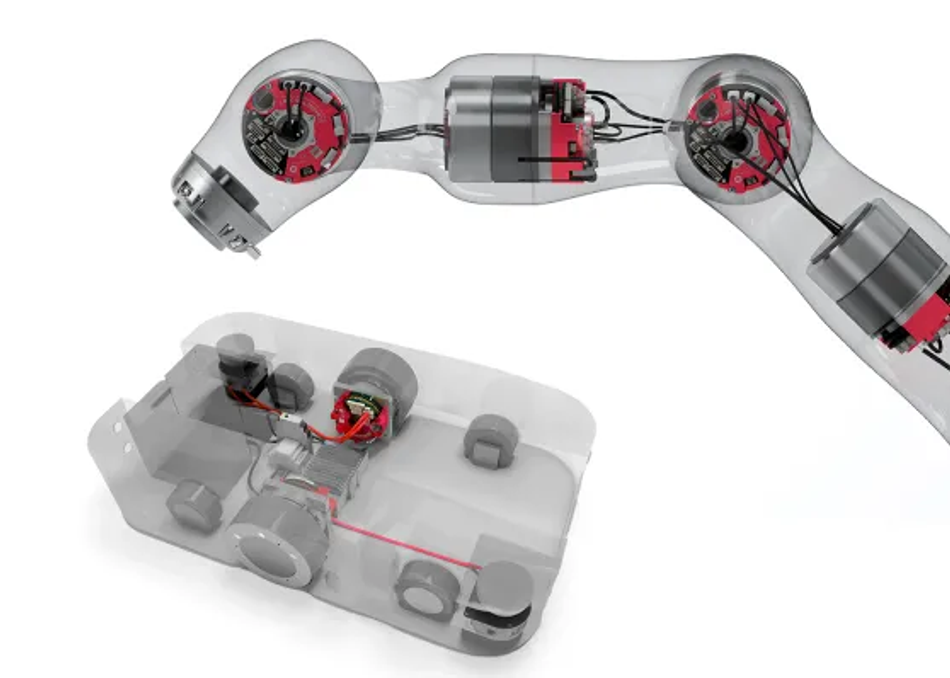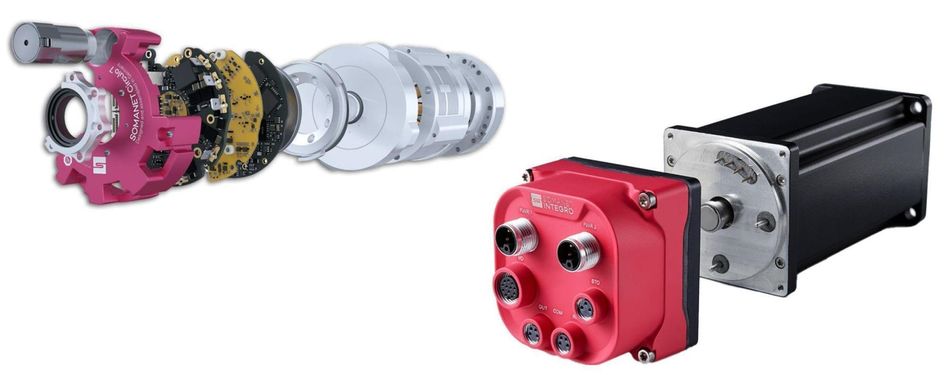Transforming Robotics with Next-Gen Integrated Motion Devices - A Synapticon and Nexperia Case Study
From a component supplier to a strategic partner, Nexperia's collaboration with Synapticon facilitated innovations such as integrated motion devices. These compact units merge control, actuation, and feedback in robot joints, enhancing efficiency and broadening application potential.
Introduction
In the field of industrial automation, the roles of robots and collaborative robots (cobots) are getting increasingly critical, driving efficiency and innovation across multiple sectors. As these advanced mechanized assistants become essential everywhere, the demand for sophisticated motion technologies has surged. The collaboration between Synapticon and Nexperia emerges as a vital development in this arena, aiming to enhance robotic functions with cutting-edge technologies such as integrated motion devices (IMDs) that consolidate control, actuation, and feedback mechanisms to provide sophisticated and safe motion control for these applications. This strategic partnership promises to set new standards in the technology underpinning modern robotics, addressing complex challenges with innovative solutions.
This article will first discuss the evolution of industrial robotics, cobots, and the emergence of cageless robots, setting the stage for a deeper understanding of the crucial role played by IMDs. By examining the Synapticon and Nexperia partnership, we offer insight into how these organizations have joined forces to drive forward the developments in robotics, overcoming supply chain hurdles and technological limitations to achieve significant advancements. From the development of integrated motion products like SOMANET Circulo and Integro to exploring the applications that these innovations enable, we chart the course of this journey and its implications for the next generation of robotics.
The Evolution of Industrial Robotics, Cobots, and Cageless Robots
Industrial automation has witnessed a remarkable evolution, marked by the integration of robotics in manufacturing and service industries. The beginning of this transformation can be traced back to traditional industrial robots—mechanized giants engineered for precision, speed, and endurance. Anchored to specific tasks, these robots symbolized the first wave of automation, performing repetitive and hazardous jobs with consistency. However, their operation within isolated environments, often encased in safety cages, highlighted a clear delineation between human workers and robotic machinery.
Cobots and Cageless Robots
The emergence of collaborative robots, or cobots, marked a shift in this paradigm. Designed to work alongside humans, cobots are integrated with advanced sensors and software, enabling them to safely detect and respond to human presence and actions. This collaborative approach democratizes access to robotic technology for smaller enterprises and opens new avenues for automation in delicate tasks requiring a blend of precision and flexibility.
Suggested Reading: Streamlining Cobot Design with Digital Platforms and Online Resources
Cageless robots stand as one of the newest advancements in the ongoing evolution of industrial robots. These robots eliminate the physical barriers that once separated machines from humans, leveraging sophisticated algorithms and safety mechanisms to ensure a seamless and safe interaction. By blurring the lines between traditional industrial robots and cobots, cageless robots offer a new level of versatility and integration.
Automated Guided Vehicles and Autonomous Mobile Robots
Beyond these categories lie Automated Guided Vehicles (AGVs) and Autonomous Mobile Robots (AMRs), which combine the challenges of building a cobot with the demands and complexity of mobile automation, expanding robotic functionalities into more dynamic and versatile environments. These mobile units extend the concept of cobots to logistics and material handling, navigating through warehouses and manufacturing floors autonomously or with minimal guidance. By handling tasks ranging from transporting materials to delivering products within a facility, AGVs, and AMRs showcase the expanding role of robotics beyond conventional applications, illustrating the flexibility and adaptability of modern automation.
Together, these advancements in robotic technology reflect the growing importance and unique demands of motion technology. Each category of robot—traditional, collaborative, cageless, AGV, and AMR—presents its own set of challenges and opportunities, pushing the boundaries of what's possible in automation and requiring continuous innovation in IMDs to meet their sophisticated needs.
Integrated Motion Devices
IMDs hold the potential to revolutionize the field of robotics. These devices combine servo drives, functional safety, brakes, and encoders in a single device that is mechanically integrated seamlessly. IMDs transform robots into highly functional machines capable of complex, coordinated actions. They are the critical components that convert electrical signals into mechanical movement, ensuring that robots can perform tasks with the precision and agility demanded by modern industries.
Integrating IMDs within robotic joints represents a pivotal advancement in robotics technology, offering a variety of benefits and innovations in the design and function of robotic systems. This approach focuses on embedding the control, actuation, safety, and communication mechanisms directly within the joints of robots, significantly deviating from traditional designs where such components are externally mounted or housed in separate control units.
Developing these IMDs for robotics presents a unique set of challenges. Size, efficiency, and functionality emerge as primary constraints, demanding a delicate balance. The drive towards miniaturization, without compromising power or functionality, necessitates innovative engineering solutions.
Efficiency is another critical aspect, as robotic applications often require devices that can operate continuously without excessive heat generation or energy consumption. Moreover, functionality constraints mean these devices must be versatile enough to perform a wide range of movements and tasks, from the delicate touch needed in medical surgeries to the robust force required in automotive assembly lines.
Advancements in integrated motion technology are thus essential for robots to meet the next threshold of potential. These advancements encompass everything from novel motor designs and material innovations to sophisticated control algorithms and power management techniques. The evolution of these technologies is not just about enhancing individual components; it's about creating a synergistic system that elevates the entire robotic platform.
In the following section, we will present a case study that showcases a success story in this very domain. By partnering with Nexperia, Synapticon has not only addressed these challenges but has also paved the way for groundbreaking advancements in integrated motion technology. Their collaboration highlights how strategic partnerships can drive innovation, leading to the development of cutting-edge solutions that push the boundaries of what's possible in robotics.
Synapticon and Nexperia: A Strategic Alliance
Synapticon Enables Software-Defined Robots
Synapticon is a pioneering brand that distinguishes itself by focusing on a "software-first" philosophy. By prioritizing software in the design and functionality of drives and controllers, Synapticon has developed an industry-leading portfolio that is compact, highly integrated, efficient, and user-friendly.
Robot joints are critical components that enable the articulation and precise movement of robotic limbs, facilitating complex tasks and enhancing the robot's range of motion.
Its products are designed to meet the diverse needs of industrial robots, collaborative robots, automated guided vehicles (AGVs), and autonomous mobile robots (AMRs), with technology platforms based on the SOMANET Motion software stack. This approach facilitates solutions for integrating motion controllers directly within the axes of motion of a robotic device, bringing unparalleled flexibility and capability to the robotics industry.
Synapticon's Response to Supply Chain Challenges
The global COVID-19 pandemic and subsequent supply chain crisis of 2021-22 posed unprecedented challenges for electronics manufacturers worldwide, including Synapticon. The company faced potential delays in the development of its products due to a global shortage of electronic components. The threat of production halts, and the risk of contract losses prompted Synapticon to seek a new, reliable supplier for its critical components.
Turning to distributor EBV Elektronik (an Avnet Company), Synapticon was introduced to Nexperia, which is known for its dependable, high-volume supply of semiconductor components. Nexperia promptly addressed Synapticon's immediate needs for standard components like multiplexers and diodes while ensuring long-term availability, thereby preserving the continuity of production and fostering a direct, mutually beneficial partnership.
From initial engagement as a component supplier, the relationship between Synapticon and Nexperia evolved into a deep collaboration. Exploring Nexperia's extensive portfolio led Synapticon to incorporate Nexperia's solutions into its innovative SOMANET lineup, extending the integrated motion concept to fixed machines.
This partnership exemplifies how adversity can catalyze innovation and strategic alliances. Nexperia's role transcended from a supplier to a collaborative partner, providing Synapticon with essential components that allowed it to maintain its edge in the competitive field of robotics. The alliance underscores the importance of engineering expertise and logistic reliability in achieving advancements in robotic motion control.
SOMANET Integro and SOMANET Circulo
The collaboration between Synapticon and Nexperia has led to the development of two landmark products: SOMANET Circulo and SOMANET Integro. These innovations show how the partnership has helped improve integrated motion technology, changing what cobots can do and creating new standards in the robotics industry.
Concept, Design, and Advantages
SOMANET Circulo is the world's first all-in-one servo drive designed specifically for cobots and robots, integrating certified functional safety, a braking system, and an encoder into a singular, compact solution. Its revolutionary design simplifies the assembly and integration process for robotic arms, offering a plug-and-play solution that eliminates the need for additional adjustments or components. This not only accelerates the development time for manufacturers but also significantly reduces costs, making sophisticated robotic solutions more accessible.
SOMANET Integro further extends the integrated motion concept, promising to revolutionize machines. The SOMANET Integro lineup is designed to operate without any temperature-related reduction in motor power, even at up to 120 A peak current, without increasing the motor size. This capability is achieved through the use of elaborated SOMANET software technology in combination with well-designed hardware.
Transforming Cobot Capabilities and Industry Implications
By combining multiple functions into single, efficient units, these innovations improve the performance and versatility of cobots and enhance their safety and reliability. The reduced size and integrated nature of these solutions allow for more compact and agile robots capable of performing more complex tasks in tighter spaces. This opens up new possibilities for automation in industries where space is at a premium or where precision and safety are of utmost importance.
Moreover, the advancements embodied in SOMANET Circulo and Integro have broader implications for the whole automation industry. They set a precedent for the development of IMDs, highlighting the importance of software-defined robotics and the potential for further miniaturization and efficiency in robot design. As these technologies become more widespread, they are expected to lower barriers to entry for smaller companies and startups, democratizing access to advanced applications and fostering innovation across various sectors.
Applications of SOMANET
The innovations brought forth by SOMANET technology are actively reshaping practical applications across a spectrum of robotic technologies. From cobots and robotic arms to AGVs and integrated motor axles, SOMANET is at the forefront, driving significant improvements in efficiency, safety, and functionality.
Cobots and Robotic Arms
In the domain of cobots and robotic arms, IMDs enable unprecedented levels of precision, safety, and user-friendliness. Integrating SOMANET Circulo and Integro in these devices facilitates seamless human-robot collaboration, ensuring safety without compromising efficiency or flexibility. This is particularly beneficial in manufacturing environments where cobots work alongside humans, performing tasks ranging from assembly to quality control with delicate precision. The compactness and efficiency of SOMANET-powered servo drives allow for the development of lighter, more agile robotic arms that can be easily integrated into existing production lines, enhancing their adaptability to diverse tasks and environments.
AGVs (Automated Guided Vehicles)
AGVs, crucial for material handling in warehouses, manufacturing plants, and distribution centers, benefit from improved navigation and control thanks to SOMANET’s integrated motion control capabilities. The technology ensures that AGVs can operate more efficiently, with enhanced battery life and reduced maintenance needs, thereby optimizing logistics operations and reducing operational costs. Furthermore, the scalability and flexibility offered by Somanet-equipped AGVs enable businesses to adapt swiftly to changing demands and operational environments.
Integrated Motor Axles
SOMANET technology's impact extends into the development of integrated motor axles, providing a streamlined solution for electric drive applications. This integration presents a shift towards more compact, efficient, and powerful motor systems, essential for industrial machinery. By incorporating motion control and power electronics into a single unit, SOMANET facilitates a significant reduction in space and weight, contributing to better energy efficiency and performance. By utilizing SOMANET Integro, machine builders save up to 40% of materials like cabling and control cabinets, achieve 50% cost savings compared to a traditional setup and can rely on 60% less space that is required.
High-performance MOSFETs by Nexperia for Powering the Next Generation of Robots
In the pursuit of advancing robotic technologies, the choice of components plays a pivotal role in achieving high efficiency, reliability, and performance. It is not only the choice of the right component, but above all the perfect product-package combination that makes the difference and creates a clear competitive advantage. A prime example of such a critical component is the Nexperia NextPower 100 V PSMN2R0-100SSF MOSFET in the innovative LFPAK package, which has emerged as a key to powering the next generation of robots, including those enhanced by Synapticon's SOMANET technologies.
Nexperia NextPower 100 V PSMN2R0-100SSF MOSFET
This Nexperia MOSFET is distinguished by its exceptional attributes that make it ideally suited for the demanding environments of robotic applications. The PSMN2R0-100SSF is designed to withstand high operating temperatures up to 175°C, a feature crucial for maintaining performance and reliability in the compact, enclosed spaces typical of robotic systems. This high-temperature tolerance ensures that robots can operate for extended periods without the risk of overheating, which is particularly important in industrial settings where downtime can lead to significant productivity losses.
Key Features and Advantages
High Operating Temperature: The ability to operate efficiently at temperatures as high as 175°C without performance degradation proves this MOSFET's robustness. This feature ensures that even under high power demands or in harsh operating environments, the MOSFET will continue to function reliably, safeguarding the robot's operational integrity.
Compact and Durable Package Type: The PSMN2R0-100SSF is housed in an LFPAK88 package, a compact and durable package design that contributes to the long lifetime and reliability of the component. This packaging facilitates efficient thermal management and minimizes the space required for the MOSFET, allowing for more compact and streamlined robot designs.
Supply Reliability: Nexperia's proven ability to supply these MOSFETs in production volumes on time is another critical factor in their selection. In the fast-paced world of robotics, where development and production timelines are tightly managed, the assurance of component availability is essential. Nexperia’s commitment to reliable supply chains ensures that robotic manufacturers can maintain continuous production schedules without the risk of delays due to component shortages.
By addressing key challenges such as heat management, space optimization, and component reliability, Nexperia's MOSFET enables the creation of more efficient, durable, and versatile robotic solutions. This advancement is particularly relevant for the next generation of cobots, AGVs, and other robotic platforms that require sophisticated power management solutions to achieve new levels of performance and functionality.
Suggested Reading: A story of innovation: How LFPAK revolutionized an industry
Future Outlook
Choosing high-quality components like the Nexperia PSMN2R0-100SSF MOSFET highlights the role of component reliability and quality in advancing robotics technology. As robots and machines become increasingly integral to industrial, commercial, and consumer applications, the demand for components that meet these stringent requirements will continue to grow, paving the way for further innovations in robotic capabilities and applications.
Looking ahead in robotics innovation, improvements in cobot technology, led by the partnership between brands like Synapticon and Nexperia, mark the beginning of new opportunities. Innovations, such as the development of SOMANET Integro and Circulo, mark a significant leap forward, promising to elevate further the capabilities, efficiency, and application spectrum of collaborative robots.
The expected release of SOMANET Integro in 2025 signals to the industry the upcoming availability of more advanced, flexible, and easy-to-use machinery solutions. These developments are not merely incremental; they represent a foundational shift towards more integrated, intelligent, and adaptable automation tools.
With a commitment to pushing the boundaries of what's possible in robotics, future plans include exploring new technologies and materials, further advancements in IMDs, and continuously improving power efficiency and performance. The aim is to address the current demands of the automation industry and anticipate future challenges and opportunities, ensuring that the next generation of robots is equipped to meet them.
Conclusion
The collaboration between Synapticon and Nexperia has contributed to the advancement of robotics and machine technology, particularly through the development of IMDs. These devices, merging control, actuation, and feedback directly into the joints, lead to more compact and efficient robots, enhancing their application across industries.
This partnership navigated supply chain challenges and brought about innovations like SOMANET Circulo and Integro. Such advancements are pivotal for the evolution of cobots and the broader robotics field, offering improvements in performance, safety, and versatility. This case study illustrated the critical role of collaborative innovation in driving technological progress and expanding the capabilities of robotic systems.






